Discover 35 hidden attractions, cool sights, and unusual things to do in St. Louis (United States). Don't miss out on these must-see attractions: Gateway Arch, The Magic House, and Museum of Westward Expansion. Also, be sure to include Museum of Transportation in your itinerary.
Below, you can find the list of the most amazing places you should visit in St. Louis (Missouri).
Table of Contents
Gateway Arch
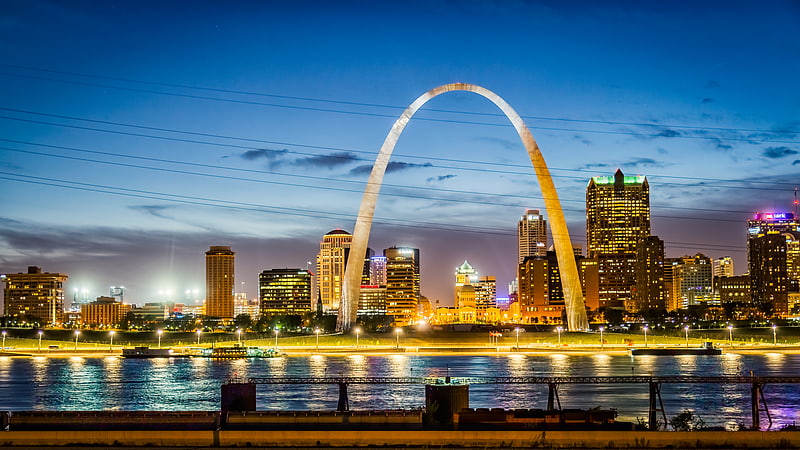
Monument in St. Louis, Missouri. The Gateway Arch is a 630-foot tall monument in St. Louis, Missouri, United States. Clad in stainless steel and built in the form of a weighted catenary arch, it is the world's tallest arch and Missouri's tallest accessible building. Some sources consider it the tallest man-made monument in the Western Hemisphere. Built as a monument to the westward expansion of the United States and officially dedicated to "the American people", the Arch, commonly referred to as "The Gateway to the West", is a National Historic Landmark in Gateway Arch National Park and has become an internationally recognized symbol of St. Louis, as well as a popular tourist destination.
The Arch was designed by Finnish-American architect Eero Saarinen in 1947; construction began on February 12, 1963, and was completed on October 28, 1965 at an overall cost of $13 million (equivalent to $83 million in 2018). The monument opened to the public on June 10, 1967. It is located at the site of the founding of St. Louis on the west bank of the Mississippi River.[1]
Address: Poplar St, 63102 St. Louis
The Magic House
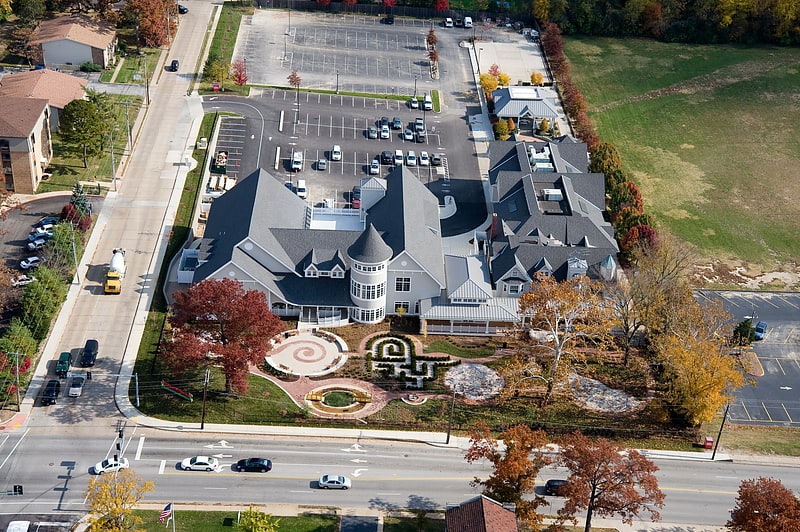
Museum in Kirkwood, Missouri. The Magic House is a not-for-profit children's museum located in Kirkwood, Missouri, just outside St. Louis. The Magic House opened as a children's museum in 1979 with the mission of engaging children in hands-on learning experiences that encourage experimentation, creativity and the development of problem-solving skills within a place of beauty, wonder, joy and magic. Since the opening of the Museum in 1979, The Magic House has undergone a series of additions and renovations that have expanded the Museum space from 5,500 square feet to 55,000 square feet. The Magic House has gained recognition as one of the nation's top children's museums, and was ranked the nation's #1 attraction based on child appeal by Zagat U.S. Family Travel Guide. The Museum attracts more than 560,000 visitors per year and since its opening has been visited by more than 12 million people.[2]
Address: 516 S Kirkwood Rd, 63122 St. Louis
Museum of Westward Expansion
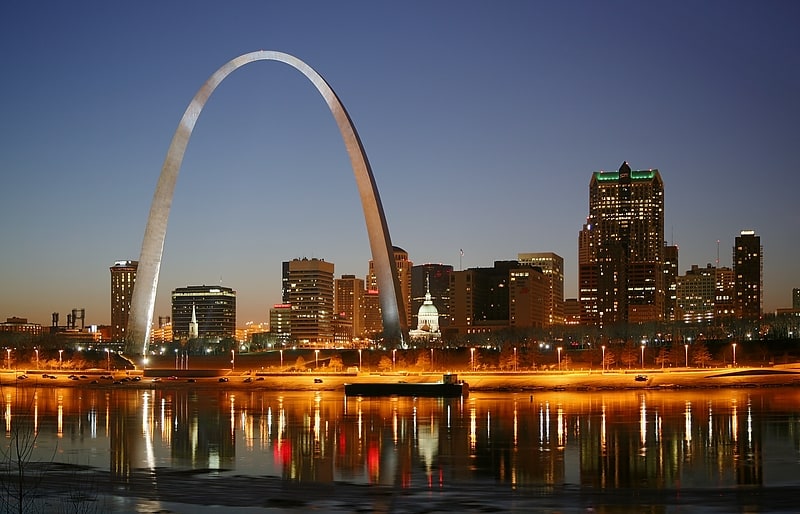
Memorial park with an iconic landmark. Gateway Arch National Park is an American national park located in St. Louis, Missouri, near the starting point of the Lewis and Clark Expedition.
The memorial was established to commemorate:
- the Louisiana Purchase and subsequent westward movement of American explorers and pioneers;
- the first civil government west of the Mississippi River; and
- the debate over slavery raised by the Dred Scott case.
The national park consists of the Gateway Arch, a steel catenary arch that has become the definitive icon of St. Louis; a 91-acre (36.8 ha) park along the Mississippi River on the site of the earliest buildings of the city; the Old Courthouse, a former state and federal courthouse where the Dred Scott case originated; and the 140,000 sq ft (13,000 m2) museum at the Gateway Arch.
The immediate surroundings of the Gateway Arch were initially designated the Jefferson National Expansion Memorial (a national memorial) by executive order on December 21, 1935. The Gateway Arch was completed on October 28, 1965; the area surrounding it was redesignated as the "Gateway Arch National Park" (a national park) in 2018. The park is maintained by the National Park Service (NPS).[3]
Address: 11 N 4th St, 63102 St. Louis
Museum of Transportation
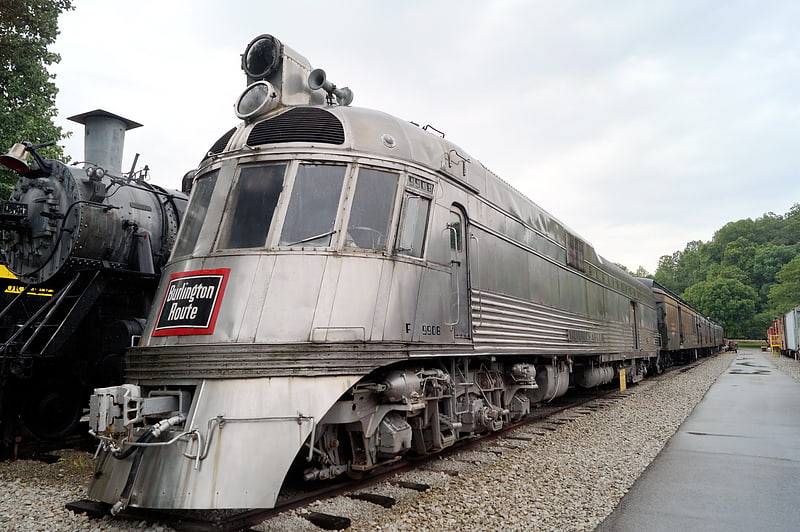
Museum in St. Louis County, Missouri. The National Museum of Transportation is a private, 42-acre transportation museum in the Kirkwood suburb of St. Louis, Missouri. Founded in 1944, it restores, preserves, and displays a wide variety of vehicles spanning 15 decades of American history: cars, boats, aircraft, and in particular, locomotives and railroad equipment from around the United States. The museum is also home to a research library of transportation-related memorabilia and documents.
At the southwest corner of the property is West Barretts Tunnel. Built in 1853, it is one of a pair of tunnels that were the first to operate west of the Mississippi River. It was added to the National Register of Historic Places in 1978.
The museum has its own railway spur to an active main line formerly owned by the Missouri Pacific Railroad, now by the Union Pacific Railroad. This has allowed the museum to take possession of large and unusual pieces of railroad equipment. A miniature railroad operates around a loop of track near the parking lot and a full-sized restored trolley operates Thursday–Sunday from April through October.[4]
Address: 2933 Barrett Station Rd, 63122 St. Louis
Forest Park
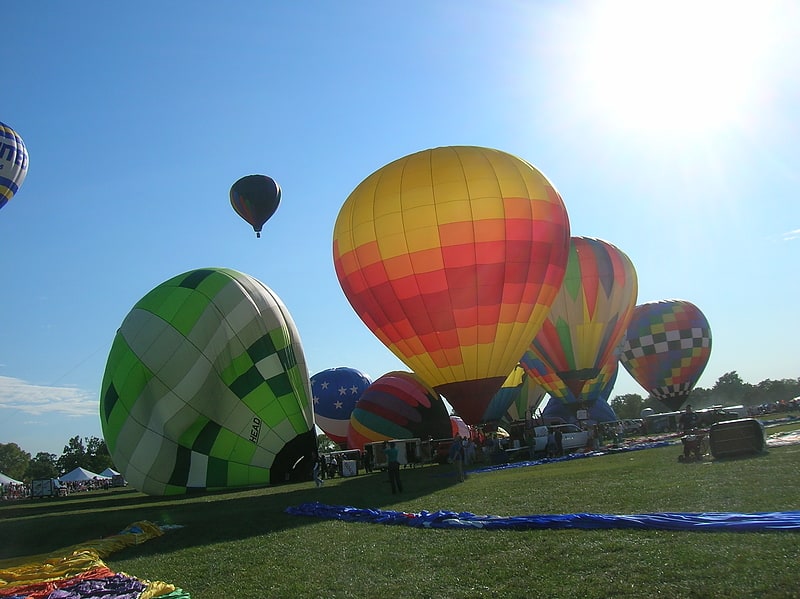
Sprawling historic public space. Forest Park is a public park in western St. Louis, Missouri. It is a prominent civic center and covers 1,326 acres. Opened in 1876, more than a decade after its proposal, the park has hosted several significant events, including the Louisiana Purchase Exposition of 1904 and the 1904 Summer Olympics. Bounded by Washington University in St. Louis, Skinker Boulevard, Lindell Boulevard, Kingshighway Boulevard, and Oakland Avenue, it is known as the "Heart of St. Louis" and features a variety of attractions, including the St. Louis Zoo, the St. Louis Art Museum, the Missouri History Museum, and the St. Louis Science Center.
Since the early 2000s, it has carried out a $100 million restoration through a public-private partnership aided by its Master Plan. Changes have extended to improving landscaping and habitat as well. The park's acreage includes meadows and trees and a variety of ponds, manmade lakes, and freshwater streams. For several years, the park has been restoring prairie and wetlands areas of the park. It has reduced flooding and attracted a much greater variety of birds and wildlife, which have settled in the new natural habitats.[5]
Address: btwn Lindell Blvd & Oakland Ave, 63112 St Louis
Saint Louis Art Museum
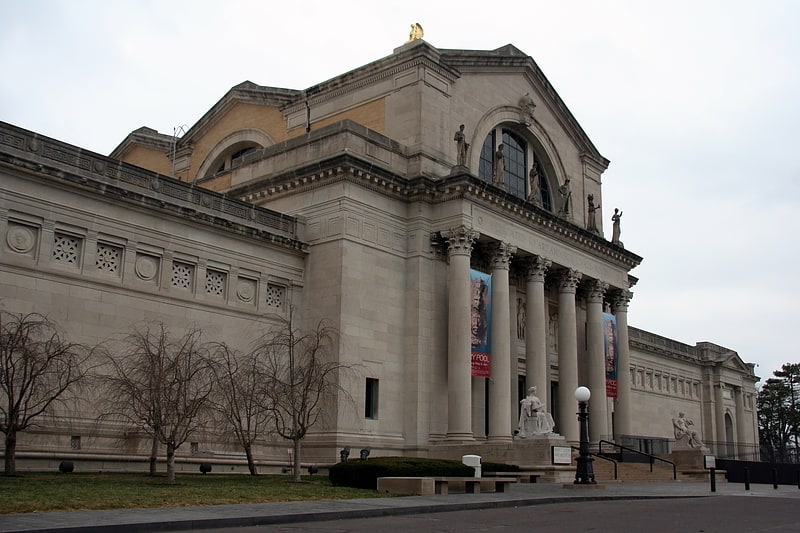
Wide-ranging art exhibits. The Saint Louis Art Museum is one of the principal U.S. art museums, with paintings, sculptures, cultural objects, and ancient masterpieces from all corners of the world. Its three-story building stands in Forest Park in St. Louis, Missouri, where it is visited by up to a half million people every year. Admission is free through a subsidy from the cultural tax district for St. Louis City and County.
In addition to the featured exhibitions, the museum offers rotating exhibitions and installations. These include the Currents series, which features contemporary artists, as well as regular exhibitions of new media art and works on paper.[6]
Address: 1 Fine Arts Dr, 63110 St. Louis
Soulard Farmers Market
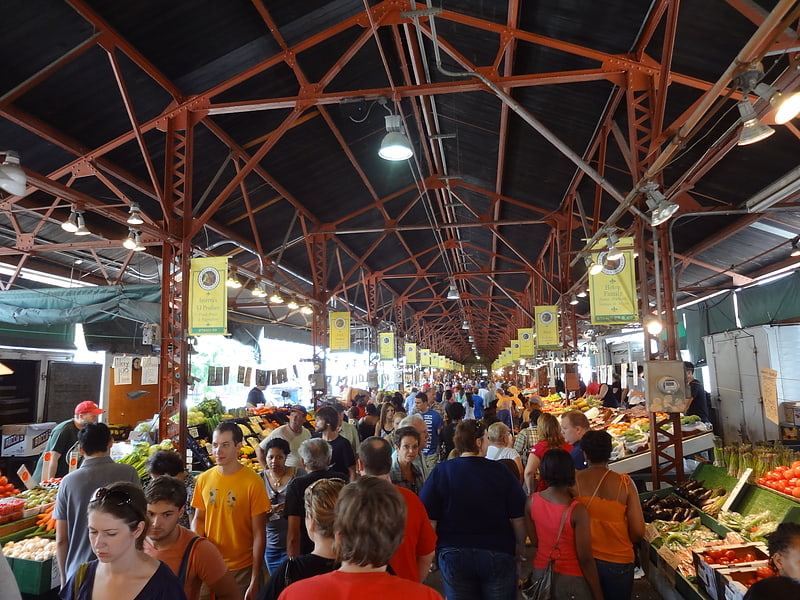
Farmers' market in St. Louis, Missouri. Soulard Farmers Market is the oldest operating public market in St. Louis, Missouri in the Soulard neighborhood, and the only one operated by the city. It has a reputation of being the oldest public market in the United States west of the Mississippi River.[7]
Address: 730 Carroll St, 63104-3808 St. Louis
Old Courthouse
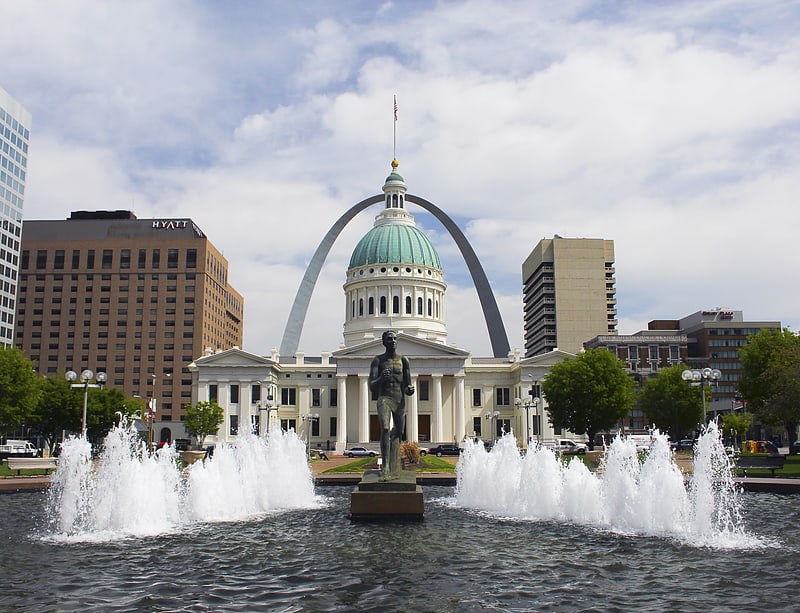
Building in St. Louis, Missouri. The Old St. Louis County Courthouse was built as a combination federal and state courthouse in St. Louis, Missouri. Missouri's tallest habitable building from 1864 to 1894, it is now part of Gateway Arch National Park and operated by the National Park Service for historical exhibits and events.[8]
Address: 11 N 4th St, 63102-1810 St. Louis
Missouri Botanical Garden
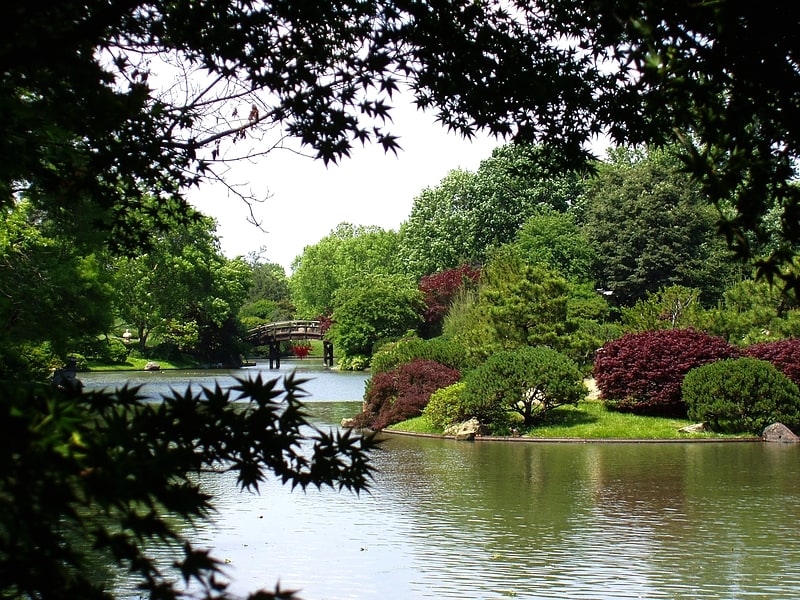
Walkable gardens with exhibits. The Missouri Botanical Garden is a botanical garden located at 4344 Shaw Boulevard in St. Louis, Missouri. It is also known informally as Shaw's Garden for founder and philanthropist Henry Shaw. Its herbarium, with more than 6.6 million specimens, is the second largest in North America, behind that of the New York Botanical Garden. The Index Herbariorum code assigned to the herbarium is MO and it is used when citing housed specimens.[9]
Address: Shaw Garden, St. Louis
Saint Louis Zoo
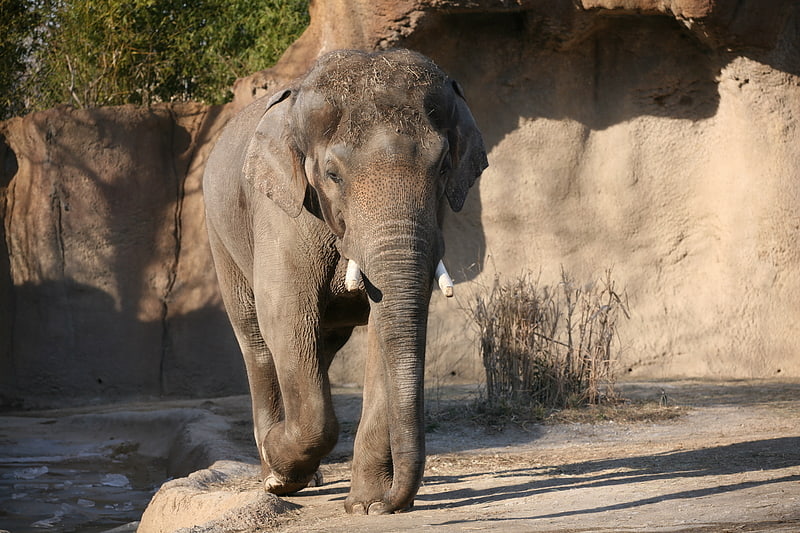
Free zoo with large mammals and penguins. The Saint Louis Zoo, officially the Saint Louis Zoological Park, is a zoo in Forest Park, St. Louis, Missouri. It is recognized as a leading zoo in animal management, research, conservation, and education. The zoo is accredited by the Association of Zoos and Aquariums. Admission is free based on a public subsidy from a cultural tax district, the Metropolitan Zoological Park and Museum District; fees are charged for some special attractions. A free reservation is required to enter the zoo since the start of the COVID 19 Pandemic of 2020 and are available via the zoo’s website. A special feature is the 2 ft narrow-gauge Emerson Zooline Railroad with passenger trains pulled by Chance Rides C.P. Huntington locomotives that encircle the zoo, stopping at the more popular attractions.
The city purchased its first exhibit, the Flight Cage, from the Smithsonian Institution following the 1904 St. Louis World's Fair. After the zoo was established in 1910, new exhibits, areas, and buildings were added through the decades to improve care of the animals, the range of animals and habitats shown, ands education and interpretation. The head of the male lesser kudu, with his elegant spiraled horns, is the symbol of the Saint Louis Zoo.
In September 2017, the Saint Louis Zoo teamed up with the Missouri Botanical Garden and Washington University in St. Louis in a conservation effort known as the Living Earth Collaborative. The collaborative, run by Washington University scientist Jonathan Losos, seeks to promote further understanding of the ways humans can help to preserve the varied natural environments that allow plants, animals, and microbes to survive and thrive. Some of their other ongoing conservation efforts include the #byetobags movement, encouraging the use of reusable bags, and their turtle-tracking program, which tracks location, population, and health of the box turtle population of Forest Park.
In 2017 and 2018, the zoo was chosen by USA Today as the best in the United States.[10]
Address: 1 Government Dr, 63110 St Louis
Cathedral Basilica of Saint Louis
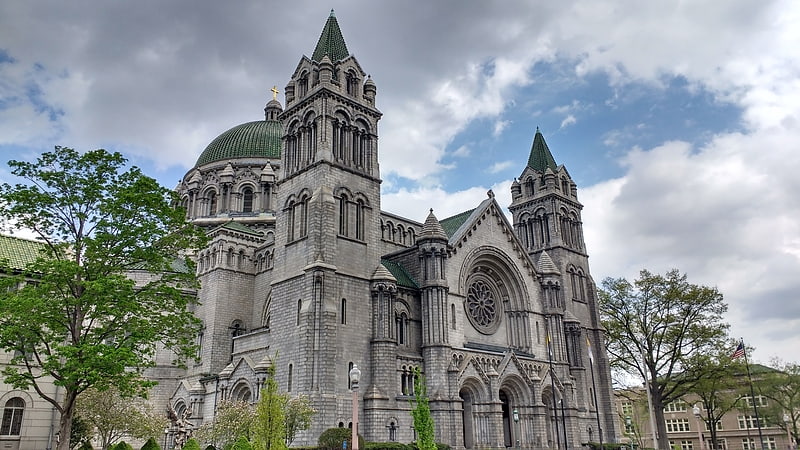
Opulent church with gilded mosaic art. The Cathedral Basilica of Saint Louis, also known as the Saint Louis Cathedral, is a cathedral of the Roman Catholic Church located in the Central West End neighborhood of St. Louis, Missouri. Completed in 1914, it is the mother church of the Archdiocese of St. Louis and the seat of its archbishop, currently Mitchell T. Rozanski. The cathedral is named for Saint Louis and was designated a basilica by Pope John Paul II in 1997.
The cathedral was built as a replacement for the previous Saint Louis Cathedral, now the Basilica of Saint Louis, King of France, located along the Mississippi River. Although workers began clearing ground for the building on May 1, 1907, dedication of the Cathedral and its first Mass did not take place until October 18, 1914, when the superstructure was complete. Consecration of the church took place more than a decade later on June 29, 1926. The church is known for its large mosaic installation (which is one of the largest in the Western Hemisphere), burial crypts, and the addition of an outdoor sculpture to promote racial harmony.[11]
Address: 4431 Lindell Blvd, 63108-2403 St. Louis
City Museum
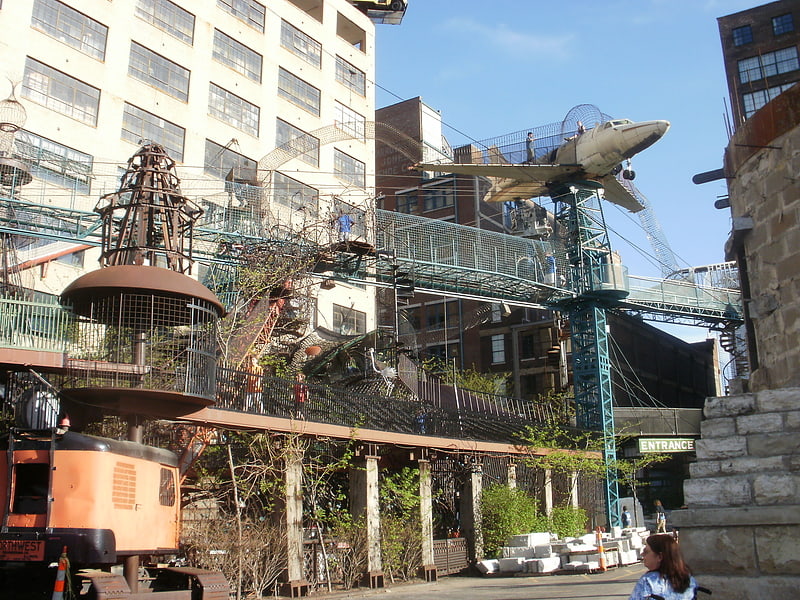
Museum in St. Louis, Missouri. City Museum is a museum whose exhibits consist largely of repurposed architectural and industrial objects, housed in the former International Shoe building in the Washington Avenue Loft District of St. Louis, Missouri, United States. Opened in 1997, the museum attracted more than 700,000 visitors in 2010.
The City Museum has been named one of the "great public spaces" by the Project for Public Spaces, and has won other local and international awards as a must-see destination. It has been described as "a wild, singular vision of an oddball artistic mind."[12]
Address: 750 N 16th St, 63103 St. Louis
Old Cathedral
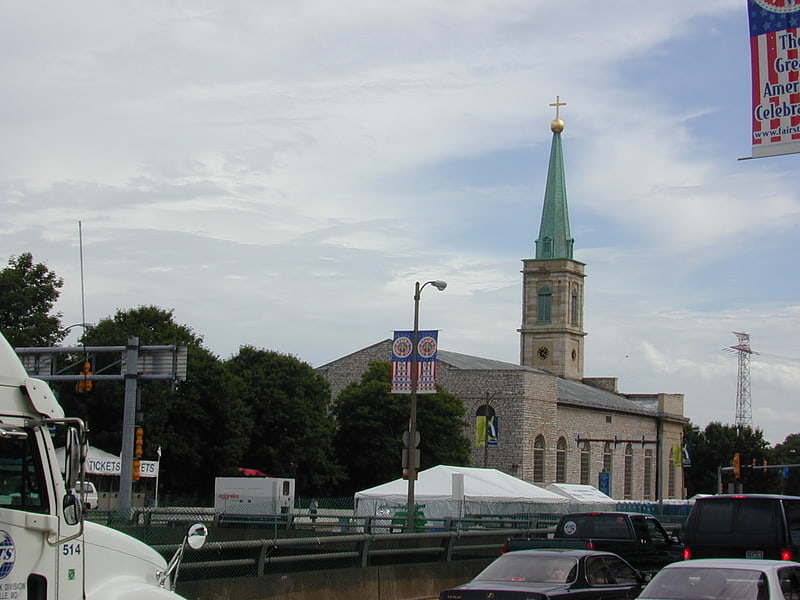
Basilica in St. Louis, Missouri. The Basilica of Saint Louis, King of France, formerly the Cathedral of Saint Louis, and colloquially the Old Cathedral, was the first cathedral west of the Mississippi River and until 1845 the only parish church in the city of St. Louis, Missouri. It is one of two Catholic basilicas in St. Louis, and it is named for King Louis IX of France, also the namesake for the city of St. Louis.
The current structure (built 1831–1834) is located near the historic riverfront of St. Louis. It is surrounded by Gateway Arch National Park. However, the church is not part of the park. Because of the historical significance of the church, it was left intact while all neighboring buildings were demolished to make way for the Gateway Arch and related park. Rev. Nicholas Smith serves as Rector.
The basilica serves as a personal parish church rather than a territorial parish church. It ranks 177th of 196 churches in number of Catholics per church in the Archdiocese of St. Louis. However, because of its historical significance (and its location along the Mississippi River near the iconic Arch), the basilica remains a popular church for marriage ceremonies in the archdiocese (ranking second of 196 churches) and a popular tourist destination.[13]
Address: 209 Walnut St, 63102-2499 St. Louis
Apotheosis of St. Louis
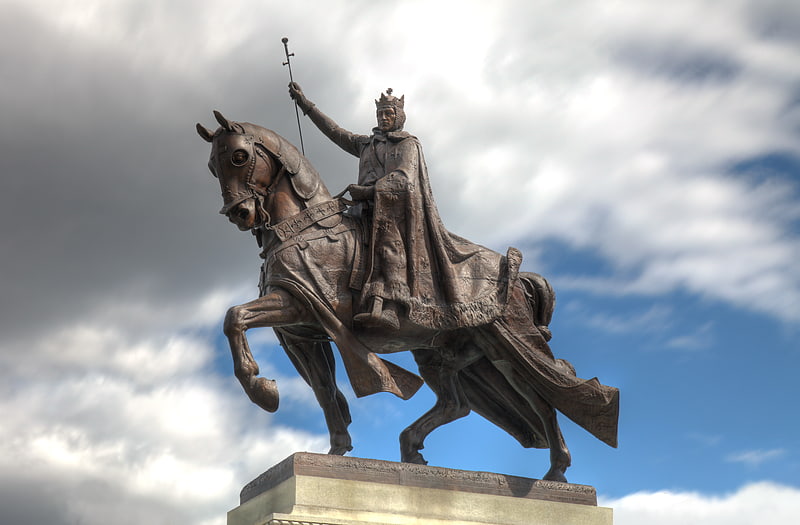
Statue by Charles Henry Niehaus. Apotheosis of St. Louis is a statue of King Louis IX of France, namesake of St. Louis, Missouri, located in front of the Saint Louis Art Museum in Forest Park. Part of the iconography of St. Louis, the statue was the principal symbol of the city between its erection in 1906 and the construction of the Gateway Arch in the mid-1960s.[14]
Eads Bridge
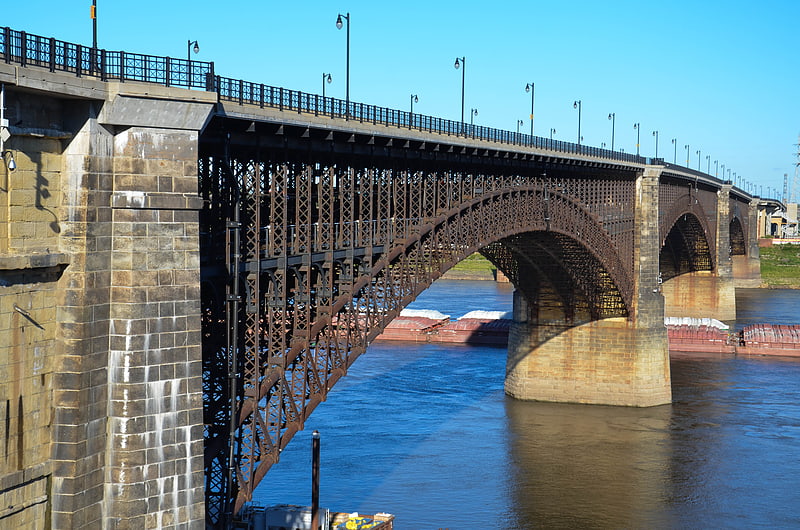
Historic 19th-century steel-truss bridge. Eads Bridge is a combined road and railway bridge over the Mississippi River connecting the cities of St. Louis, Missouri and East St. Louis, Illinois. It is located on the St. Louis riverfront between Laclede's Landing, to the north, and the grounds of the Gateway Arch, to the south. The bridge is named for its designer and builder, James Buchanan Eads. Work on the bridge began in 1867, and it was completed in 1874. Eads Bridge was the first bridge across the Mississippi south of the Missouri River. Earlier bridges were located north of the Missouri, where the Mississippi is smaller. None of the earlier bridges survive, which means that Eads Bridge is also the oldest bridge on the river.
In order to accommodate the massive size and strength of the Mississippi River, the Eads Bridge required a number of engineering feats. Perhaps most importantly, due to the use of steel by Andrew Carnegie’s Keystone Bridge Company, it was the first large-scale use of steel as a structural material and initiated the shift from wrought-iron to steel as the default material for large structures. Its foundations were the deepest underwater constructions at the time, at more than 100 feet below water level. They were installed using pneumatic caissons, a pioneering application of caisson technology in the United States and, at the time, by far the largest caissons ever built. Its center arch was the longest rigid span ever built at the time, at 520 feet. The method of constructing the arches, in which they were suspended from temporary wooden towers, is sometimes cited as the first use of the "cantilever principle" for a large bridge. These engineering principles were used for later bridges, including the Brooklyn Bridge, which began construction in 1870.
Eads Bridge became a famous image of the city of St. Louis, from the time of its erection until 1965 when the Gateway Arch was completed. The highway deck was closed to automobiles from 1991 to 2003, but has been restored and now carries both vehicular and pedestrian traffic. It connects Washington Avenue in St. Louis, Missouri with Riverpark Drive and, eventually, East Broadway, both in East St. Louis, Illinois. The former railroad deck now carries the St. Louis MetroLink light rail system, providing commuter train service between St Louis and communities on the Illinois side of the river.
The bridge is listed on the National Register of Historic Places as a National Historic Landmark. As of April 2014, it carries about 8,100 vehicles daily, down 3,000 since the Stan Musial Veterans Memorial Bridge opened in February 2014.[15]
Climatron
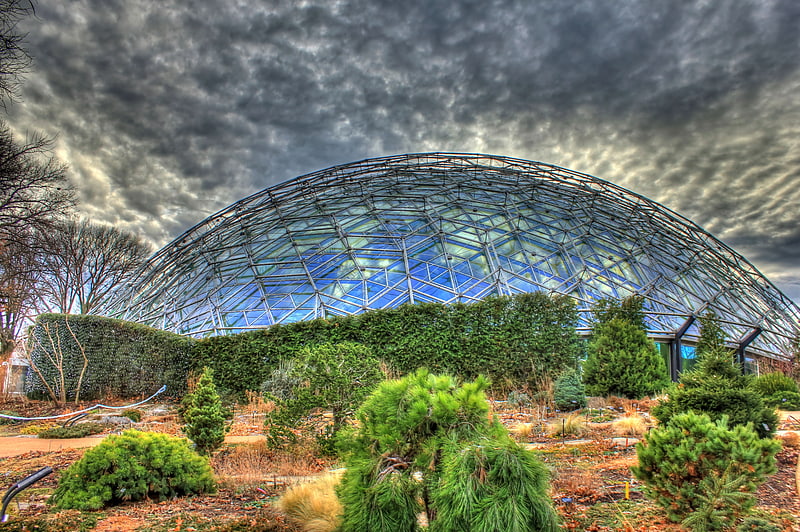
Tropical plants in a geodesic dome. The Climatron is a greenhouse enclosed in a geodesic dome that is part of the Missouri Botanical Garden in St. Louis. Initiated by then Garden director Frits W. Went, the dome is the world's first completely air-conditioned greenhouse and the first geodesic dome to be enclosed in rigid Plexiglass panels. Completed in 1960, it was designed by T. C. Howard, of Synergetics, Inc. Raleigh, North Carolina. The broad climatic range within the dome, which recreates a lowland rain forest, is achieved by sophisticated climate controls without using interior partitions.
The structure is an unpartitioned half-sphere dome, 42 m in diameter and 21 m high. The frame is supported by aluminum tubes under compression and aluminum rods under tension. The St. Louis architects Murphy and Mackey were the architects on record. Synergetics, Inc were the designers of the dome. The architects received the 1961 R. S. Reynolds Memorial Award of $25,000 for their architectural use of aluminum. In 1976 it was named one of the 100 most significant architectural achievements in United States history.
The dome contains a small stone pre-existing neo-classical pavilion and over 400 varieties of plant life. A bank of 24 flood lights, revolving at night in five-minute cycles, simulates noon light on one side of the dome and moonlight on other side. The climate ranges from the Amazon through Hawaii and Java to India.
Over time, the building experienced deterioration of the original Plexiglas panels and the adverse effect of humidity on some metal elements. The greenhouse was closed for extensive renovations in 1988 and reopened in March 1990. The original Plexiglas glazing was replaced with 2,425 panes of heat-strengthened glass (containing a plastic interlayer called Saflex) and coated with a low-emissivity film. In 2010, the Botanical Garden celebrated the 50th anniversary of the Climatron.[16]
Address: Missouri Botanical Garden, St. Louis
Historic Aircraft Restoration Museum
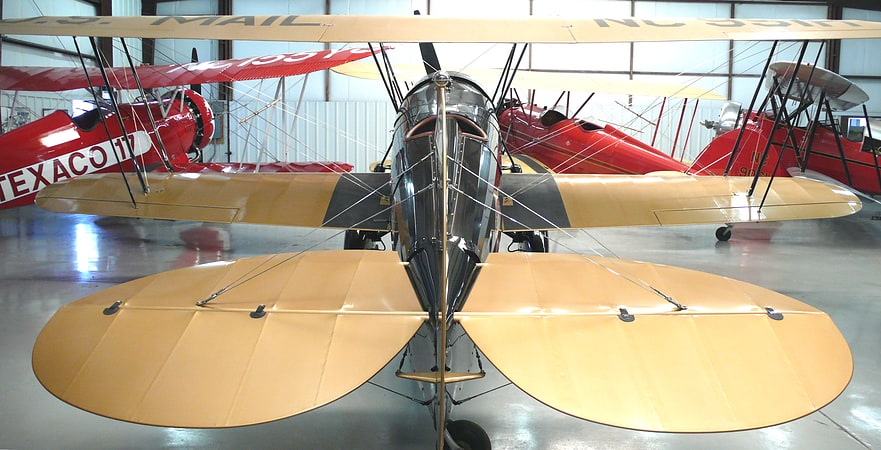
Museum in Maryland Heights, Missouri. The Historic Aircraft Restoration Museum, located at Creve Coeur Airport in Maryland Heights, Missouri is a museum dedicated to restoring and preserving historical aircraft. The airplanes in the collection are all fabric-covered, and most are biplanes from the inter-war years. The museum's volunteers maintain most of these aircraft in full working order and this is one of the largest collections of flying classic aircraft in America.[17]
Address: 3127 Creve Coeur Mill Rd, 63146-2126 St. Louis (Maryland Heights)
Shrine of St. Joseph
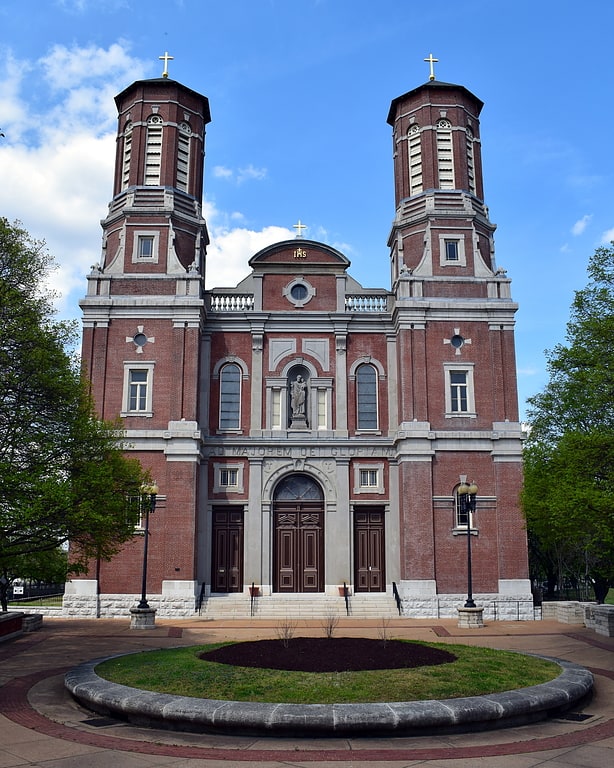
Church in St. Louis, Missouri. The Shrine of St. Joseph is a Catholic church in St. Louis, Missouri in Columbus Square. The church began in 1843 when the Jesuits founded the parish to serve the residential community consisting mostly of German immigrants. The church is the site of the only authenticated miracle in the Midwestern United States.[18]
Address: 1220 N 11th St, 63106 St. Louis
Missouri History Museum
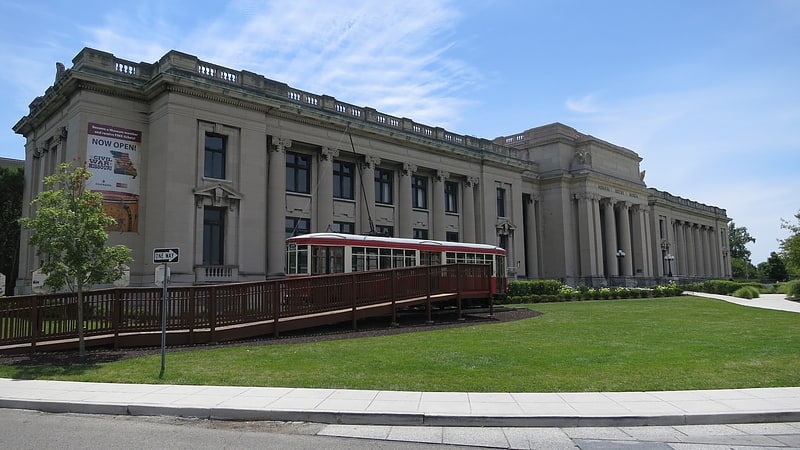
Museum in St. Louis, Missouri. The Missouri History Museum in Forest Park, St. Louis, Missouri, showcases Missouri history. It is operated by the Missouri Historical Society, which was founded in 1866. Museum admission is free through a public subsidy by the Metropolitan Zoological Park and Museum District.[19]
Address: 5700 Lindell Blvd, 63112-0040 St. Louis
Busch Stadium
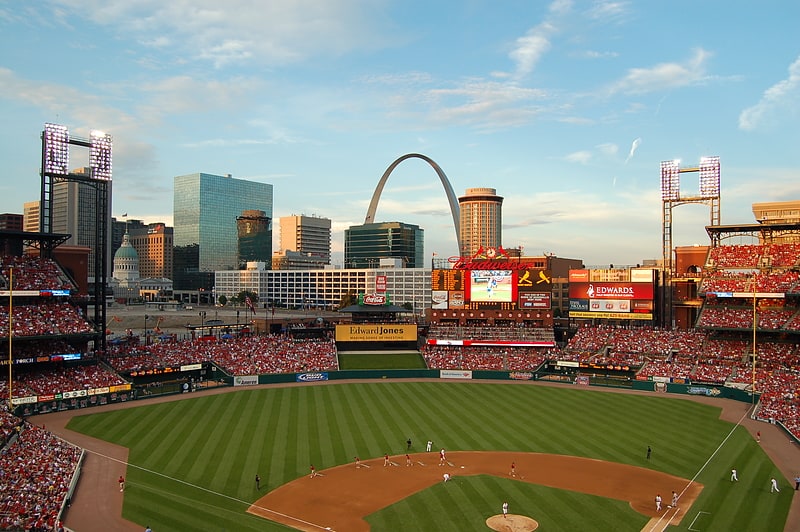
Ballpark for the St. Louis Cardinals. Busch Stadium, also referred to informally as "New Busch Stadium" or "Busch Stadium III", is a baseball stadium located in St. Louis, Missouri, the home of the St. Louis Cardinals, the city's Major League Baseball franchise. The stadium has a seating capacity of 44,494, and contains 3,706 club seats and 61 luxury suites. It replaced Busch Memorial Stadium and occupies a portion of that stadium's former footprint. A commercial area, dubbed Ballpark Village, was built adjacent to the stadium over the remainder of the former stadium's footprint.
The stadium opened on April 4, 2006 with an exhibition between the minor league Memphis Redbirds and Springfield Cardinals, both affiliates of the St. Louis Cardinals, which Springfield won 5–3 with right-hander Mike Parisi recording the first win. The first official major league game occurred on April 10, 2006 as the Cardinals defeated the Milwaukee Brewers 6–4 behind an Albert Pujols home run and winning pitcher Mark Mulder.
In 2004, then Anheuser-Busch president August Busch IV announced the brewing-giant purchased the 20-year naming rights for the stadium. Team owner William Dewitt Jr. said: "From the day we began planning for the new ballpark, we wanted to keep the name ‘Busch Stadium.' August Busch IV and Anheuser-Busch share our vision for continuing that tradition for our great fans and the entire St. Louis community."
It is the third stadium in St. Louis to carry the name Busch Stadium. Sportsman's Park was renamed Busch Stadium in 1953. Team owner August Busch Jr. had planned to name it Budweiser Stadium, but league rules prohibited naming a venue after an alcoholic beverage. Busch named the stadium after himself & his Anheuser-Busch later introduced the "Busch Beer". The first Busch Stadium closed in 1966 and both the baseball Cardinals, and the National Football League (NFL)'s team of the same name (now the Arizona Cardinals) moved to a new multi-purpose stadium, named Busch Memorial Stadium (Busch Stadium II).[20]
Address: St. Louis, 700 Clark Ave
Soulard
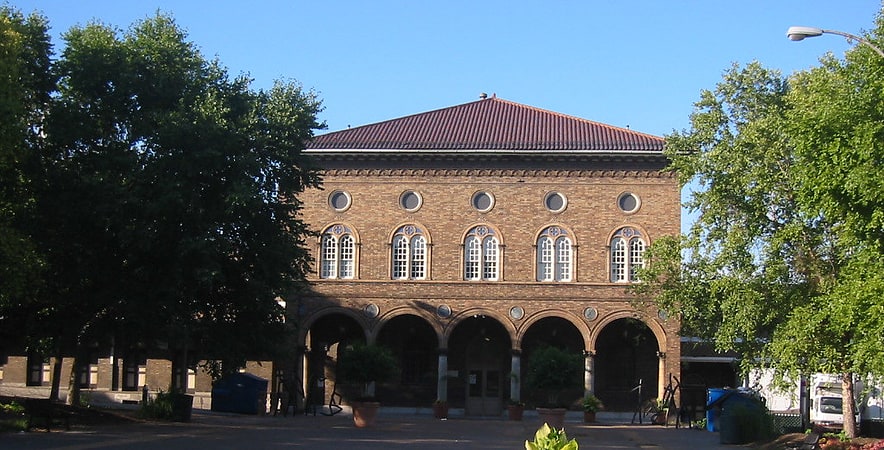
Neighborhood in St. Louis, Missouri. Soulard is a historic neighborhood in St. Louis, Missouri. It is the home of Soulard Farmers Market, the oldest farmers' market west of the Mississippi River. Soulard is one of ten certified local historic districts in the city of St. Louis.[21]
Federal Reserve Bank of St. Louis
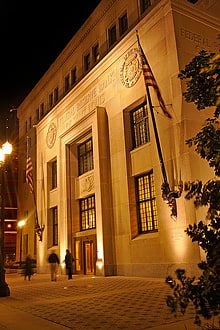
The Federal Reserve Bank of St. Louis is one of 12 regional Reserve Banks that, along with the Board of Governors in Washington, D.C. make up the United States' central bank. Missouri is the only state to have two main Federal Reserve Banks. Located in downtown St. Louis, the St. Louis Fed is the headquarters of the Eighth Federal Reserve District, which includes the state of Arkansas and portions of Illinois, Indiana, Kentucky, Mississippi, the eastern half of Missouri and West Tennessee. It has branches in Little Rock, Louisville and Memphis. Its building, at 411 Locust Street, was designed by St. Louis firm Mauran, Russell & Crowell in 1924. The Eighth District serves as a center for local, national and global economic research, and provides the following services: supervisory and regulatory services to state-member banks and bank holding companies; cash and coin-handling for the District and beyond; economic education; and community development resources.[22]
Address: 1 Federal Reserve Bank Plaza, 63102 St. Louis
Scottrade Center

Arena in St. Louis, Missouri. Enterprise Center is an 18,096-seat arena located in downtown St. Louis, Missouri, United States. Its primary tenant is the St. Louis Blues of the National Hockey League, but it is also used for other functions, such as NCAA basketball, NCAA hockey, concerts, professional wrestling and more. In a typical year, the facility hosts about 175 events. Industry trade publication Pollstar has previously ranked Enterprise Center among the top ten arenas worldwide in tickets sold to non-team events, but the facility has since fallen into the upper sixties, as of 2017.
The arena opened in 1994 as the Kiel Center. It was known as the Savvis Center from 2000 to 2006, and Scottrade Center from 2006 to 2018. On May 21, 2018, the St. Louis Blues and representatives of Enterprise Holdings, based in St. Louis, announced that the naming rights had been acquired by Enterprise and that the facility's name would change to Enterprise Center, effective July 1, 2018.[23]
Grant's Trail
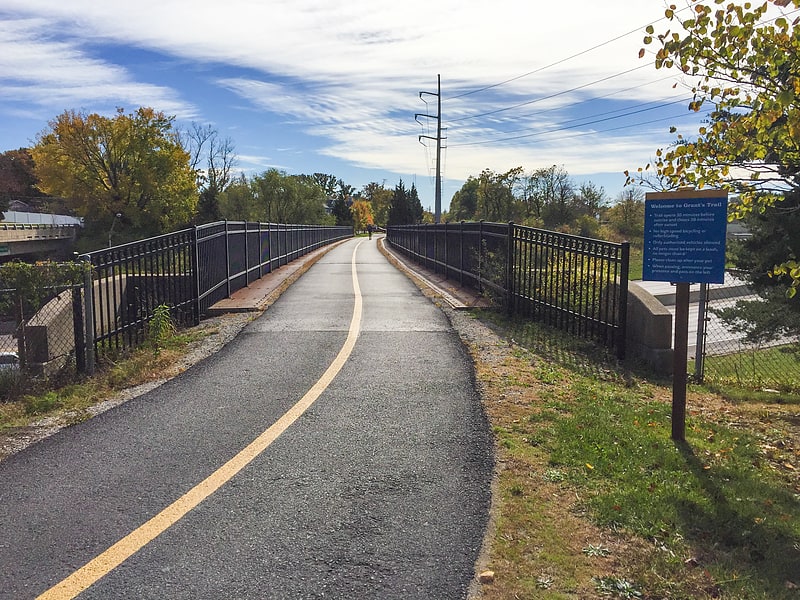
Grant's Trail is a mixed-use trail in St. Louis County, Missouri, that begins at the River Des Peres Greenway at River City Boulevard and I-55 and runs northwest to Holmes Ave and I-44 in Kirkwood. The trail is 12.14 miles and is part of the Gravois Greenway. It connects the Meramec River Greenway to the River des Peres Greenway.[24]
The Dome at America's Center
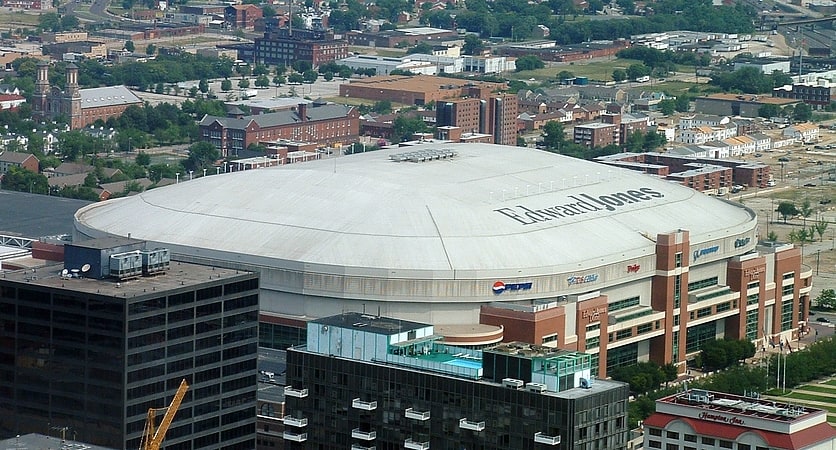
Multi-purpose stadium in St. Louis, Missouri. The Dome at America's Center is a multi-purpose stadium used for concerts, major conventions and sporting events in downtown St. Louis, Missouri, United States. Previously known as the Trans World Dome from 1995 to 2001 and the Edward Jones Dome from 2002 to 2016, it was constructed largely to lure an National Football League team back to St. Louis and to serve as a convention space.
The Dome received its initial main tenant with the arrival of the NFL's St. Louis Rams, who relocated to the city in 1995. The Rams spent the next twenty-one seasons at the Dome, departing after the 2015 NFL season to return to Los Angeles. The St. Louis BattleHawks of the revived XFL began play at the stadium in early 2020.
The Dome provides multiple stadium configurations that can seat up to 82,624 people. Seating levels include a private luxury suite level with 120 suites, a private club seat and luxury suite level with 6,400 club seats, a concourse level (lower bowl) with 28,352 seats, and a terrace level (upper bowl) with 29,400.
The Dome is part of the America's Center convention center. The convention portion has a much bigger footprint and adjoins to the west of the Dome, Cole Street to the north, Broadway to the east, and Convention Plaza to the south. The stadium is serviced by the Convention Center MetroLink rail station.[25]
Address: 901 N Broadway, 63101 St Louis
Saint Louis Science Center
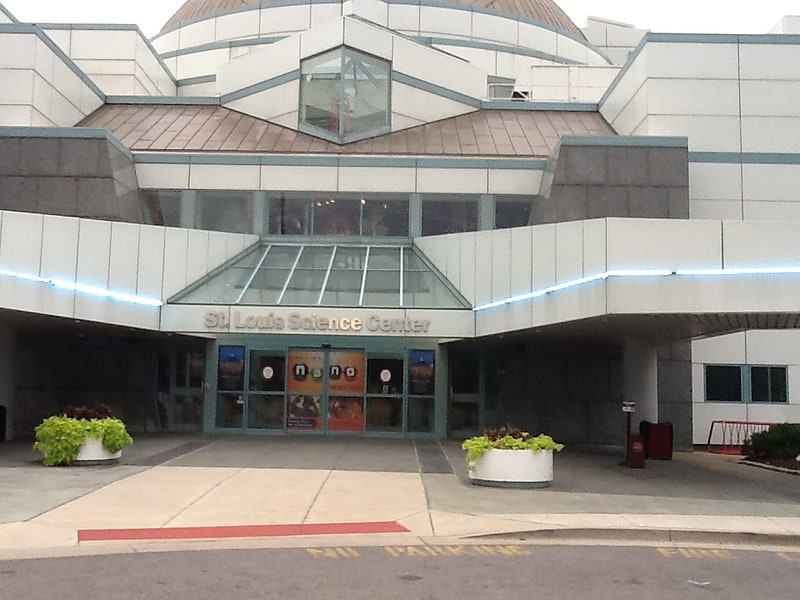
Museum in St. Louis, Missouri. The Saint Louis Science Center, founded as a planetarium in 1963, is a collection of buildings including a science museum and planetarium in St. Louis, Missouri, on the southeastern corner of Forest Park. With over 750 exhibits in a complex of over 300,000 square feet, it is among the largest of its type in the United States.[26]
Address: 5050 Oakland Ave, 63110 St. Louis
Citygarden
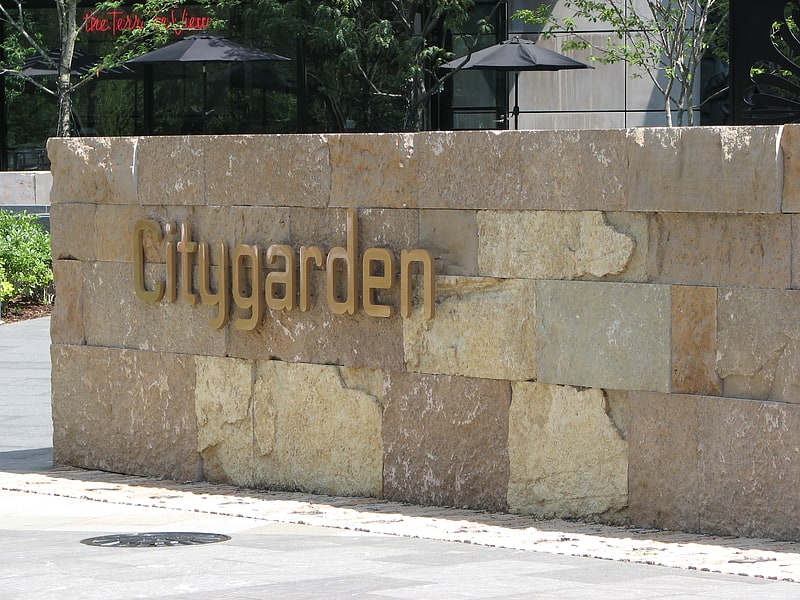
Park in St. Louis, Missouri. Citygarden is an urban park and sculpture garden in St. Louis, Missouri owned by the City of St. Louis but maintained by the Gateway Foundation. It is located between Eighth, Tenth, Market, and Chestnut streets, in the city's "Gateway Mall" area. Before being converted to a garden and park, the site comprised two empty blocks of grass. Citygarden was dedicated on June 30, 2009, and opened one day later, on July 1, 2009.
Citygarden is 2.9 acres (1.2 ha) in size—occupying two square city blocks—and cost US$30 million to develop. St. Louis' Gateway Foundation, a not-for-profit organization supporting public art, funded the design and construction of the garden. While the city owns the land on which Citygarden was developed, the foundation owns the statues and covers all park maintenance costs except water and electricity. The Gateway Foundation is also in charge of providing additional security for the garden.
There is no admission fee for visitors of Citygarden, which is located close to St. Louis' Gateway Arch and Busch Stadium. The park is open year-round and complies with the Americans with Disabilities Act of 1990.[27]
Address: 801 Market St, 63101 St Louis
Laumeier Sculpture Park
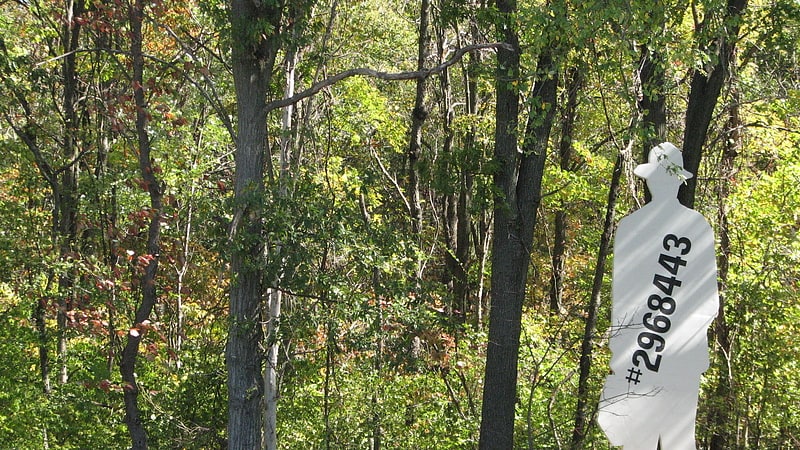
Museum in Sunset Hills, Missouri. Laumeier Sculpture Park is a 105-acre open-air museum and sculpture park located in Sunset Hills, Missouri, near St. Louis and is maintained in partnership with St. Louis County Parks and Recreation Department. It houses over 60 outdoor sculptures and features a 1.4-mile walking trail, and educational programs. There is also an indoor gallery, an 1816 Tudor stone mansion, which was the former residence of Henry and Matilda Laumeier. Laumeier is accredited by the American Alliance of Museums. The park sees about 300,000 visitors each year and operates on a $1.5 million budget.[28]
Address: 12580 Rott Rd, 63127 St. Louis
Tower Grove Park
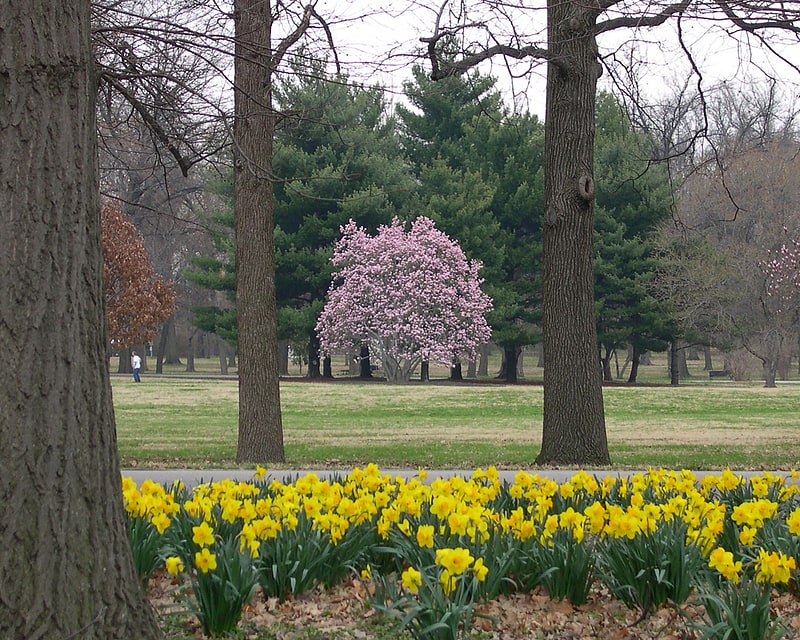
Serene green spot with historic features. Tower Grove Park is a municipal park in the city of St. Louis, Missouri. Most of its land was donated to the city by Henry Shaw in 1868. It is on 289 acres adjacent to the Missouri Botanical Garden, another of Shaw's legacies. It extends 1.6 miles from west to east, between Kingshighway Boulevard and Grand Boulevard. It is bordered on the north by Magnolia Avenue and on the south by Arsenal Street.[29]
Address: 4256 Magnolia Ave, 63110 St Louis
Peabody Opera House
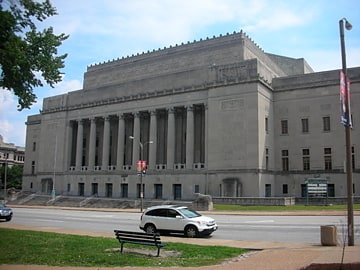
Building in St. Louis, Missouri. The Stifel Theatre is a civic performing arts building located in St. Louis, Missouri.[30]
Address: St. Louis, 1400 Market St, St. Louis, MO 63103-2609
Martin Luther King Bridge
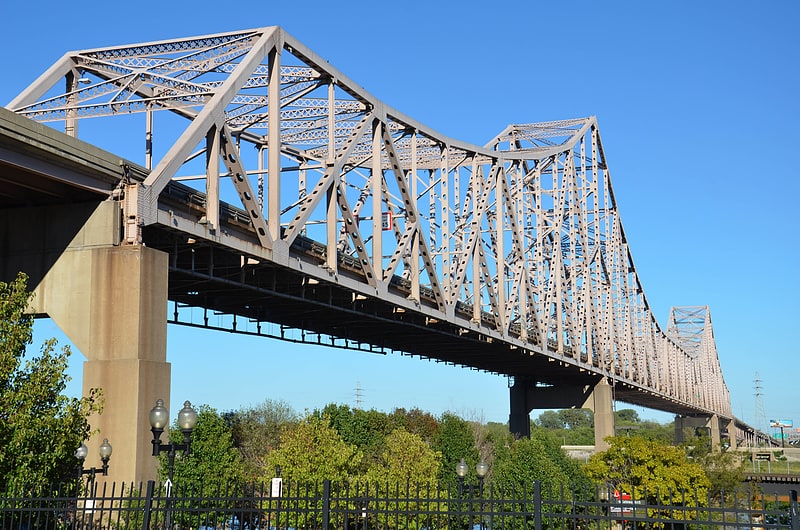
Cantilever bridge in St. Louis, Missouri. The Martin Luther King Bridge in St. Louis, Missouri, is a cantilever truss bridge of about 4,000 feet in total length across the Mississippi River, connecting St. Louis with East St. Louis, Illinois. Opened in 1951, the bridge serves as traffic relief connecting the concurrent freeways of Interstate 55, Interstate 64, and U.S. Route 40 with the downtown streets of St. Louis. It was renamed for King in 1968 after the national civil rights leader was assassinated that year.[31]
Soldiers' Memorial
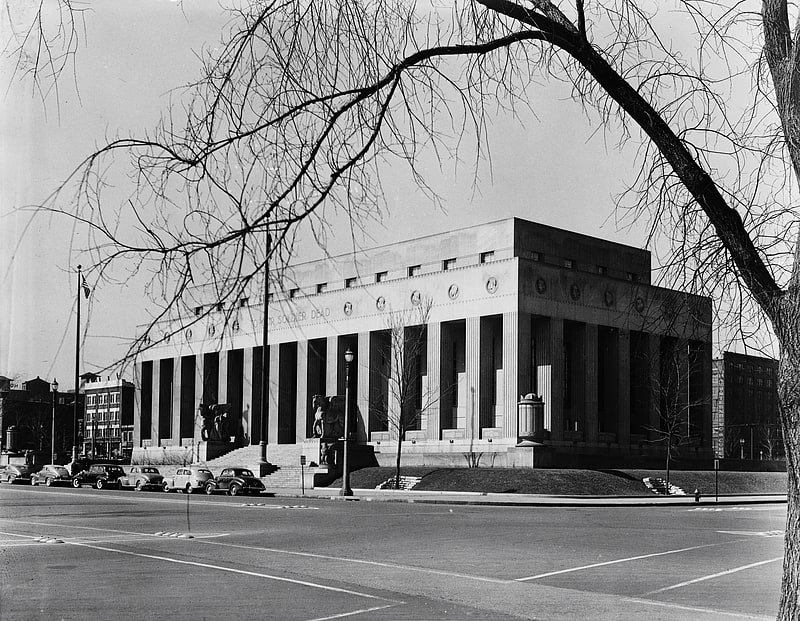
Museum in St. Louis, Missouri. The Soldiers Memorial Military Museum in downtown St. Louis is a memorial and military museum, at 1315 Chestnut Street, owned by the City of St. Louis and operated by the Missouri Historical Society. Interior east and west wings contain display cases with military displays and memorabilia from World War I and subsequent American wars. The open-air central breezeway contains a massive black marble cenotaph upon which are engraved the names of all of St. Louis' war dead from the first world war.
The building was designed by St. Louis architectural firm Mauran, Russell & Crowell in a stripped Classical style, with a severely simplified form and limited ornament. It was dedicated by Franklin Delano Roosevelt in 1936 and officially opened to the public on Memorial Day, 1938.
Four monumental sculptural groups representing figures of Loyalty, Vision, Courage and Sacrifice by sculptor Walker Hancock stand, with their horses, on the north and south sides of the building. Other architectural sculpture here was completed by Hillis Arnold.[32]
Address: 1315 Chestnut St, 63103-2317 St. Louis
Eugene Field House
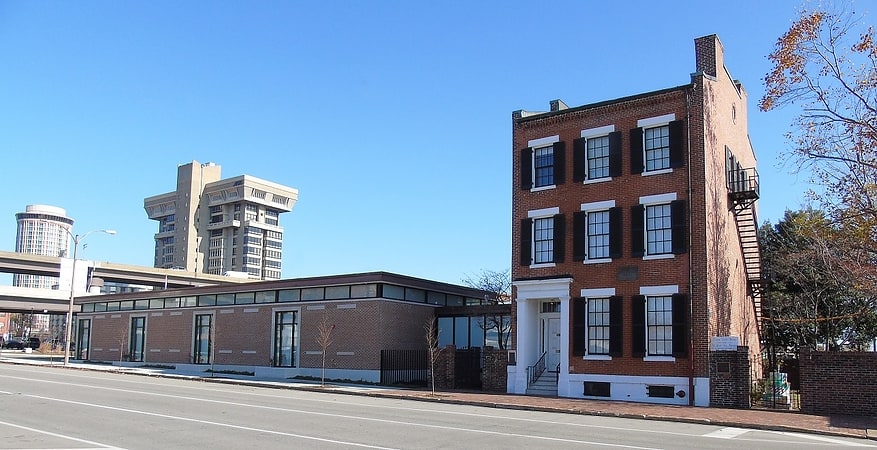
Museum in St. Louis, Missouri. The Eugene Field House is a historic house museum in St. Louis, Missouri. Built in 1845, it was the home of Roswell Field, an attorney for Dred Scott in the landmark Dred Scott v. Sandford court case. Field's son, Eugene Field, was raised there and became a noted writer of children's stories. A National Historic Landmark, it is now a museum known as the Field House Museum.[33]
Address: 634 S Broadway, 63102-1613 St. Louis
Mildred Lane Kemper Art Museum
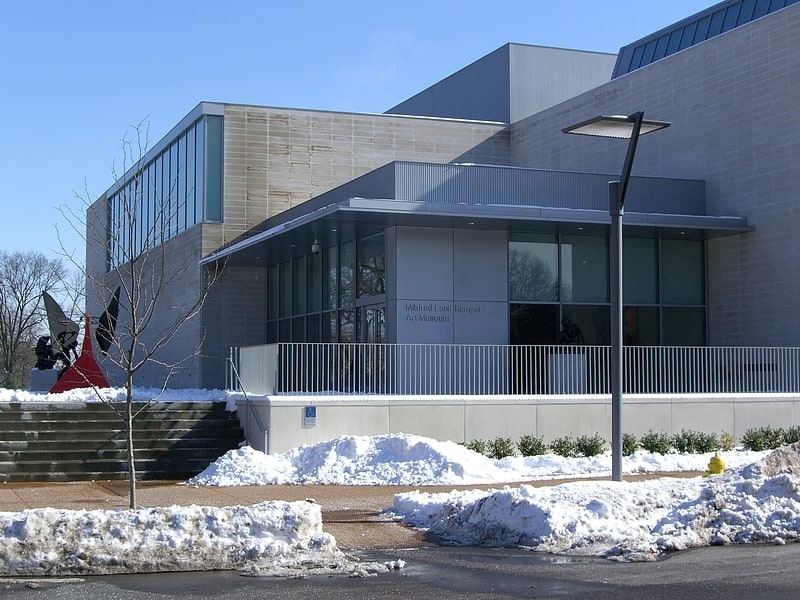
Washington University fine-arts center. The Mildred Lane Kemper Art Museum is an art museum located on the campus of Washington University in St. Louis, within the university's Sam Fox School of Design & Visual Arts. Founded in 1881 as the St. Louis School and Museum of Fine Arts, it was initially located in downtown St. Louis. It is the oldest art museum west of the Mississippi River. The Museum holds 19th-, 20th-, and 21st-century European and American paintings, sculptures, prints, installations, and photographs. The collection also includes some Egyptian and Greek antiquities and Old Master prints.
The museum moved to its current home, designed by Pritzker Prize-winner Fumihiko Maki, in 2006.
In 2018 the museum was closed for renovation as part of a $360 million campus transformation program at Washington University in St. Louis. One year later, it was reopened with a new 34-foot-tall polished stainless-steel facade, a sculpture garden, and nearly 50 percent more public display space.[34]
Address: 1 Brookings Dr, 63130 St. Louis
Wainwright Building

Building. The Wainwright Building is a 10-story, 41 m terra cotta office building at 709 Chestnut Street in downtown St. Louis, Missouri. The Wainwright Building is considered to be one of the first aesthetically fully expressed early skyscrapers. It was designed by Dankmar Adler and Louis Sullivan and built between 1890 and 1891. It was named for local brewer, building contractor, and financier Ellis Wainwright.
The building, listed as a landmark both locally and nationally, is described as "a highly influential prototype of the modern office building" by the National Register of Historic Places. Architect Frank Lloyd Wright called the Wainwright Building "the very first human expression of a tall steel office-building as Architecture."
The building is currently owned by the State of Missouri and houses state offices.
In May 2013 it was listed by an episode of the PBS series 10 That Changed America as one of "10 Buildings That Changed America" because it was "the first skyscraper that truly looked the part" with Sullivan being dubbed the "Father of Skyscrapers."[35]
Address: 111 N 7th St, 63101-2100 St. Louis